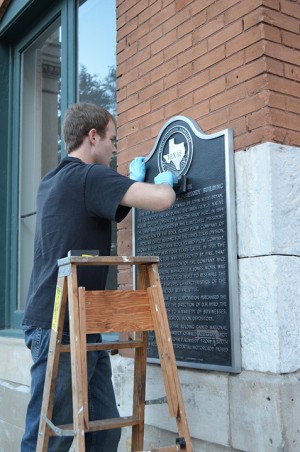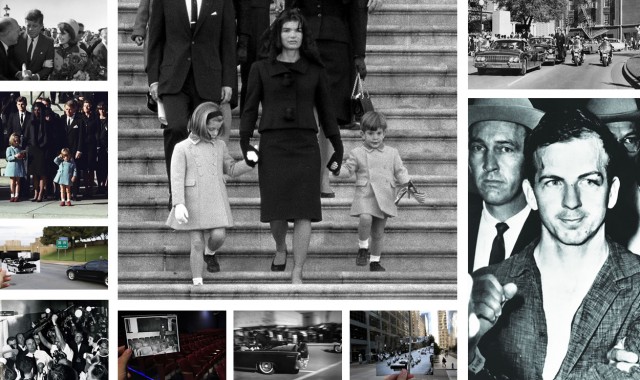|
|||||||
|
|
|||||||
 |
’63 Lariat staff looks back on assassination of John Fitzgerald KennedyBaylor Lariat staffers Ed DeLong and Ray Hubener hopped in DeLong’s car on Friday, Nov. 22, 1963, and drove to the Dallas Trade Mart. The Lariat had been covering Kennedy’s entire trip through Texas. In fact, DeLong and Hubener had just covered Kennedy’s speech in San Antonio on Thursday, where they actually saw Kennedy and the first lady step off the plane. They were in the Trade Mart, waiting for the president to arrive. In the mean time, DeLong was looking for someone to release a copy of the President’s speech. He went into. . . |
 |
|||||
Kennedy’s surgeon talks about fateful dayDr. Robert McClelland was in the operating room at Parkland Hospital in Dallas 50 years ago, the day former President John F. Kennedy died. Two days later, he was one of the surgeons who tried to save Lee Harvey Oswald’s life. The 84-year-old retired doctor is the last living doctor to have operated on Kennedy. He recalls what that day was like when the president was shot, and the events following his death. McClelland, who was a general surgeon at Parkland Memorial Hospital, spoke at Baylor on Oct. 24 about his experience of caring for Kennedy, operating on Oswald and then testifying before the Warren Commission. Q: Can you describe what that day, Nov. 22, 1963, was like when the president was shot? |
|||||||
Professors share vivid accounts of 50 years ago‘Presidents don’t die like that’Looking out the window Friday, looking at the chilly gray noontime crowd heading off to lunch, thinking about another noontime 33 years ago. We were coming back from Snappy Lunch, a little eatery in south Waco near the Baylor |

Student revives defaced Kennedy plaque in DallasIn preparation for the spotlight that will shine on the city of Dallas where President John F. Kennedy was assassinated. . . |
Legacy of JFK unique to blacksHe was the youngest elected president in the history of the United States. Fate cared little, though, as it threw him the toughest issue any president had ever been confronted with — the possibility of nuclear war. For some, it was his aversion of an imminent war with Russia that defined the administration of President John F. Kennedy and garnered him international respect. But in the eyes of Dr. Joseph Brown, associate professor of political science, Kennedy’s legacy in the eyes of blacks across the nation was shaped unequivocally by his involvement in civil rights. “Although Kennedy himself was not successful in getting the bill through Congress, he was the architect,” Brown said. Kennedy was the first to go on record in support of passing legislation for It was during this speech that he introduced to Congress the Civil Rights Act. . . |
|||||
‘Those images are fixed. They won’t go away.’Photographs reveal a glamorous president with wispy hair and a cool composure. Young Americans gather from family photos of his beautiful wife and two young children that this president brought energy into the White House. Many young Americans think of President John F. Kennedy as a charismatic. . . |
|||||||
Assassination shaped future of journalismIn modern day, discovering breaking news is as quick as swiping a text notification on a smartphone or as simple as stumbling upon a trending tweet. News now spreads so expediently and more concisely than any other time in history. Undoubtedly, times have evolved since the primitive times of technology in the late 1950s and early 1960s. Families would gather around their television set to hear the latest news, mostly in 15-minute evening bulletins. However, the assassination of President John F. Kennedy halted the world in reverence — many in mourning, others in curiosity. The television set became the hearth of the American family unit for four days from the time of the first gunshot announcement to the somber funeral procession that followed. . . |
|||||||
Home 50 Years Remembered – John F. Kennedy
50 Years Remembered – John F. Kennedy
50 Years Remembered – John F. Kennedy




